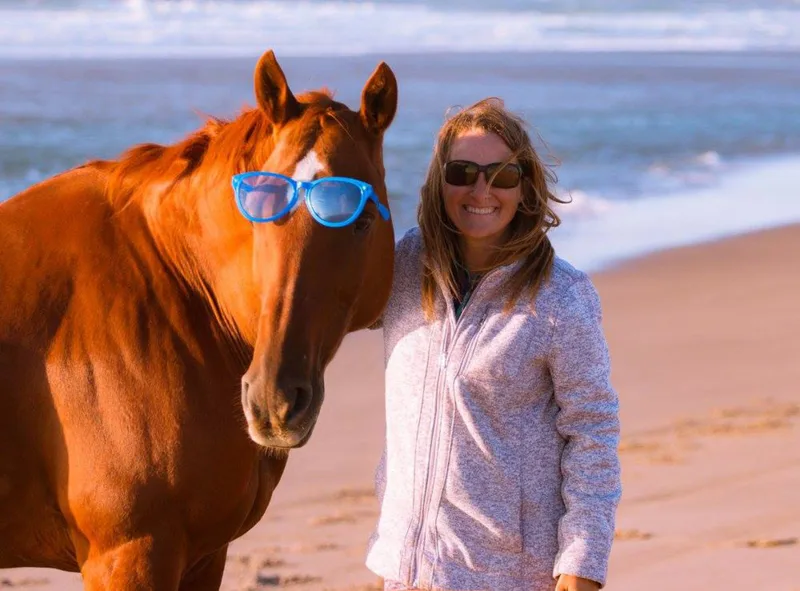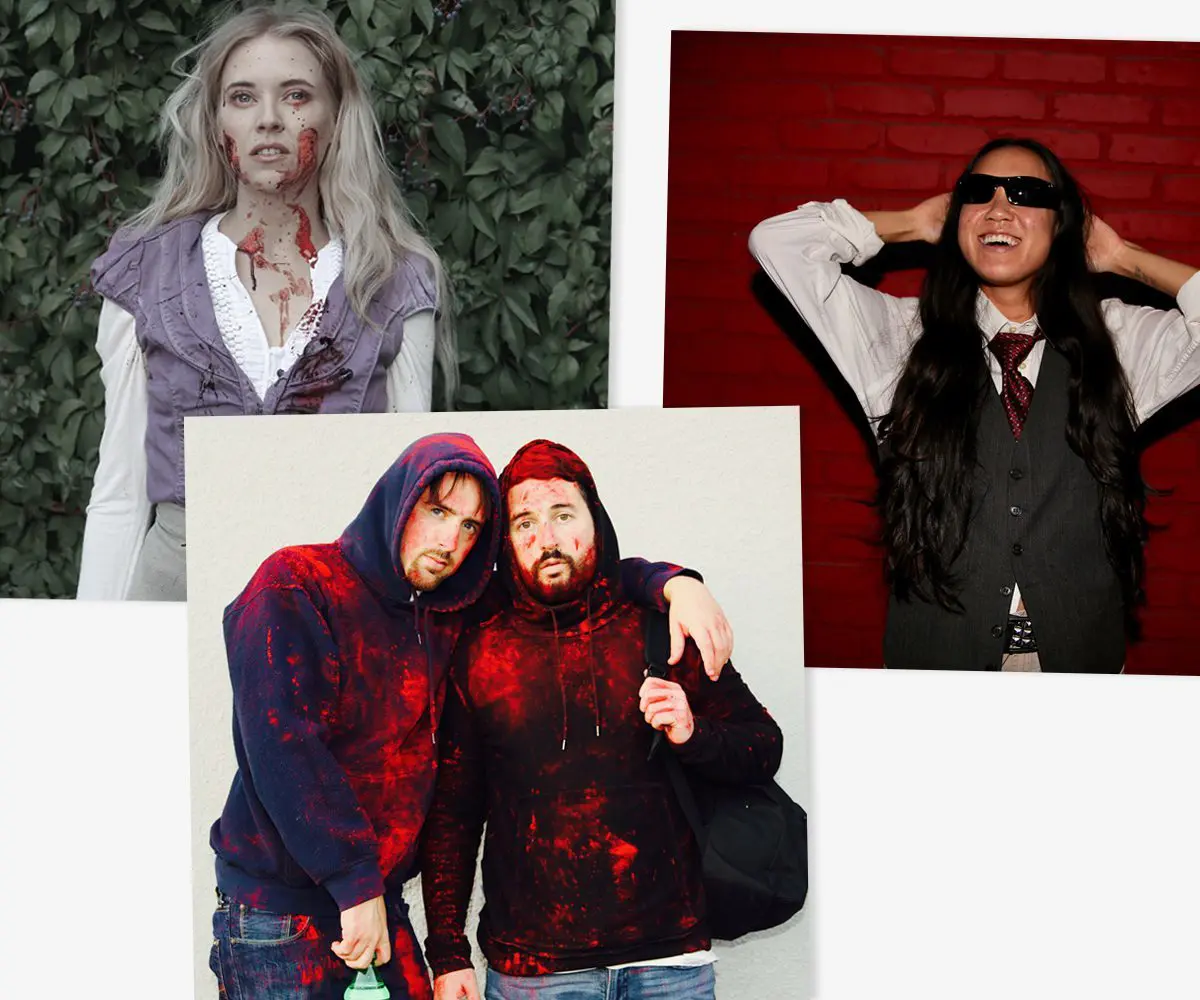This June, around the release of It Comes At Night, a flurry of tweets forced us to consider whether A24 might have a dog problem.
Let us go on record and state that A24 is most certainly a dog-adoring company (even though we’re now forbidden from BRINGING them into the office, hmmm). But we allow our artists the space to depict their emotional exorcisms as they see fit, and sometimes that existential gut punch is evoked by the death of a dog. We didn’t make the rules. Screenplay guru Blake Snyder understood the emotional stakes tethered to humanity’s relationship with pups. Why do you think he titled his book Save The Cat!? Cats get saved. Dogs get sacrificed.
We tried to make sense of our films’ dog deaths. We couldn’t for some. It’s a troubling trend for sure. But, hey, at least we weren’t responsible for A Dog’s Purpose.
SPOILER ALERT: As we’re discussing the fates of various movie doggos, it should go without saying that key plot points will come up. Do not scroll past this point. You’ve been warned.
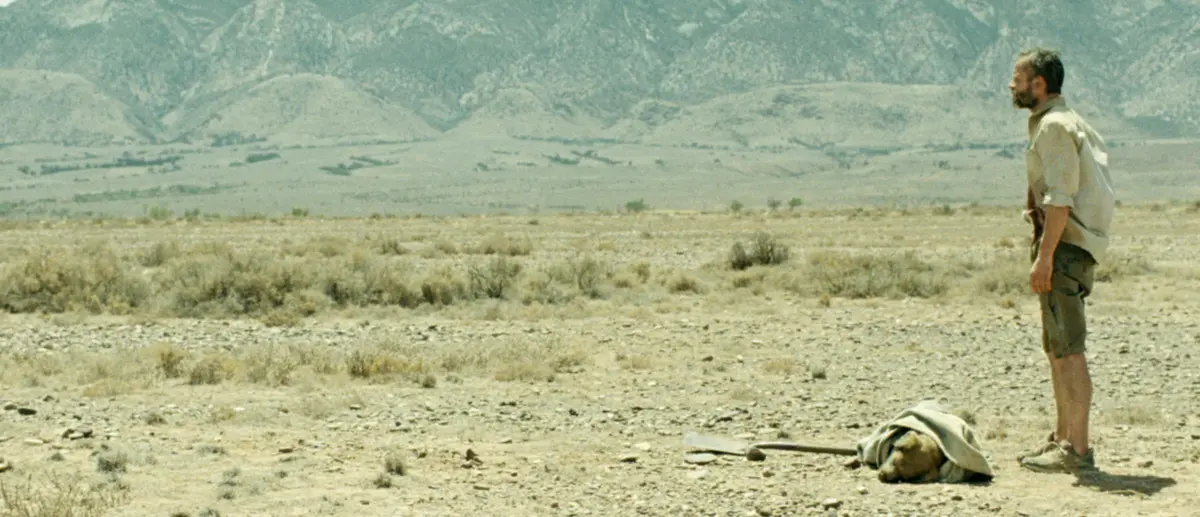
Director David Michôd’s bleak and brutal sophomore effort (go watch his feature debut Animal Kingdom for some hors d'oeuvre of his gritty sensibilities) The Rover finds Eric (a hardened Guy Pearce) confronting the collapse of law and order in the post-apocalyptic Australian outback after a small gang of petty thieves steal his car. Corpses and collateral damage accumulate during Eric’s bloody odyssey of revenge, but there’s one carcass that we don’t see until the final moments that truly contextualizes his fury.
After he recovers his stolen vehicle and dispatches the culprits, we see in his trunk is the body of his dead dog. And honestly… as an audience, you can’t hate on Michôd’s artistic choice. Unlike the human loss of life—which was rendered in lovingly graphic, gory detail—the dog death was off-screen (tasteful!) and served as the emotional catalyst for Eric’s singular quest for justice (appropriate pathos!). In the final frames of the film, we see Eric prepare to give his canine companion a proper burial in the desert. Because even in a dystopic future plagued by the violence and wickedness wrought by man, the dignity of man’s best friend was ultimately preserved. We will pat ourselves on the back for this one.
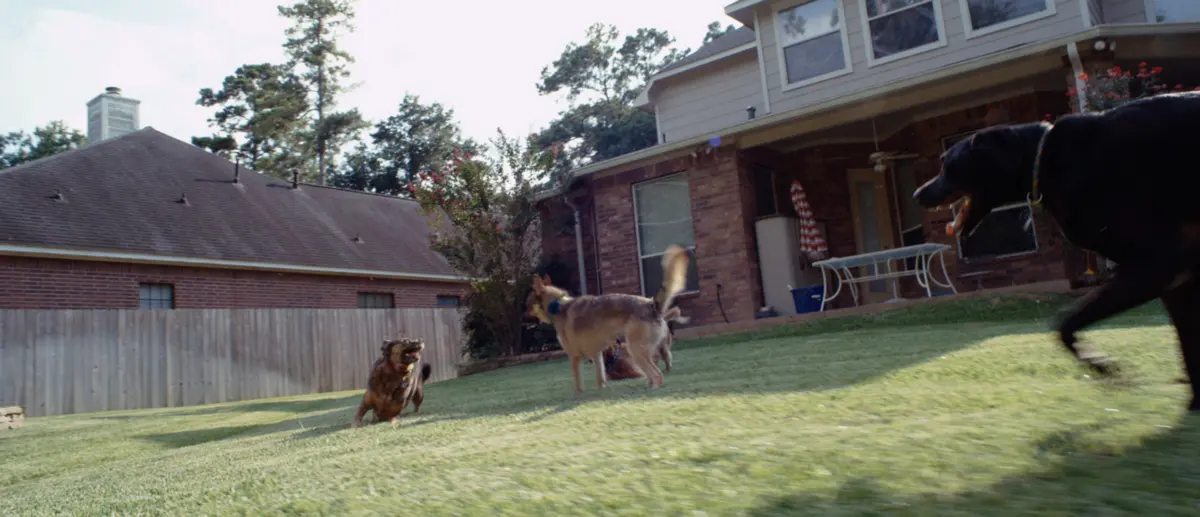
While no pups were physically maimed or merc-ed in Krisha, Trey Edward Shults’ filmic version of a fractured family portrait, the household dogs do receive heaps of unwarranted verbal abuse from their humans, which is never kosher. But this malicious mistreatment makes total sense with regards to narrative and psychology. Hear us out.
Krisha, at its core, is a film about family dysfunction—all the residual resentment and emotional traumas that metastasize over months and months until they show themselves at family reunions. The film is an orchestra of anxiety. Shults’ long takes and minimal editing allowing the chaos and claustrophobia to slowly crescendo until the powder keg of family infighting explodes.
There is a breakdown of communication between these humans, and while they unleash their disdain for one another, sometimes the poor pups are caught in the crosshairs.
The family’s three dogs are just excited to see the whole brood under one roof in this contained space. Unfortunately, what’s supposed to be euphoria for the dogs becomes anathema for the humans. But we can all rejoice knowing that each dog survives and had that giant suburban backyard to escape their miserable humans any time they pleased. Right now, they are probably burying wine corks and grass-stained sneakers as revenge, paws high-fiving with delight.
We never thought we'd find ourselves empathizing with neo-Nazi pit bulls. But, then again, we never expected Jeremy Saulnier to craft such a carefully calibrated and zeitgeisty thriller like Green Room.
During the Ain’t Rights’ attempted escape from a neo-Nazi blitzkrieg, they’re forced to fight through a death gauntlet that contains guns, machetes, and, of course, vicious pit bulls ready to attack at their master’s command. When one of our protagonists, Sam (the great Alia Shawkat), has her throat ripped out by one of the rabid pitties, we as an audience should lose all sympathy for these monster dogs, right?
Not so fast. Even more so than the young, red-laced skinheads blindly following their fanatical leader’s commands, these murderous pups are products of toxic indoctrination. There’s a striking moment toward the end of the film that shows one of the pit bulls, injured by Pat (Anton Yelchin) in self-defense, wandering through the backroads of the Pacific northwest with its chain collar dragging behind, trying to find his way back to his “master.”
Don’t empathize with Nazis (in fact, punch more of them publicly). But Nazi dogs deserve our love and rehabilitation.
Yorgos is the master of forcing characters into simultaneously hilarious and grim dilemmas, but it takes some moral gymnastics to justify the death of David’s (Colin Farrell) Austrian Shepherd—who was once his human brother—in The Lobster.
Pitch-black humor certainly helps to soften the horror of seeing a dog literally being executed. And one could argue that it all adds up thematically—the murder of David’s dog/brother is supposed to provoke an emotional reaction to the cynical and dismal dystopia of the film; Angeliki Papoulia’s Heartless Woman/dog killer is an antagonistic archetype that emerges from the performative nature of relationships; this dog is technically a human and all of this is satire anyway, etc… But holding the camera for what feels like an eternity as Papoulia’s character stomps out a dog until we hear its slow, painful death? We'll just say it: This dog murder was borderline gratuitous. But it’s Yorgos! (He’s European!) And a two-time A24 filmmaker—so he gets a free pass.
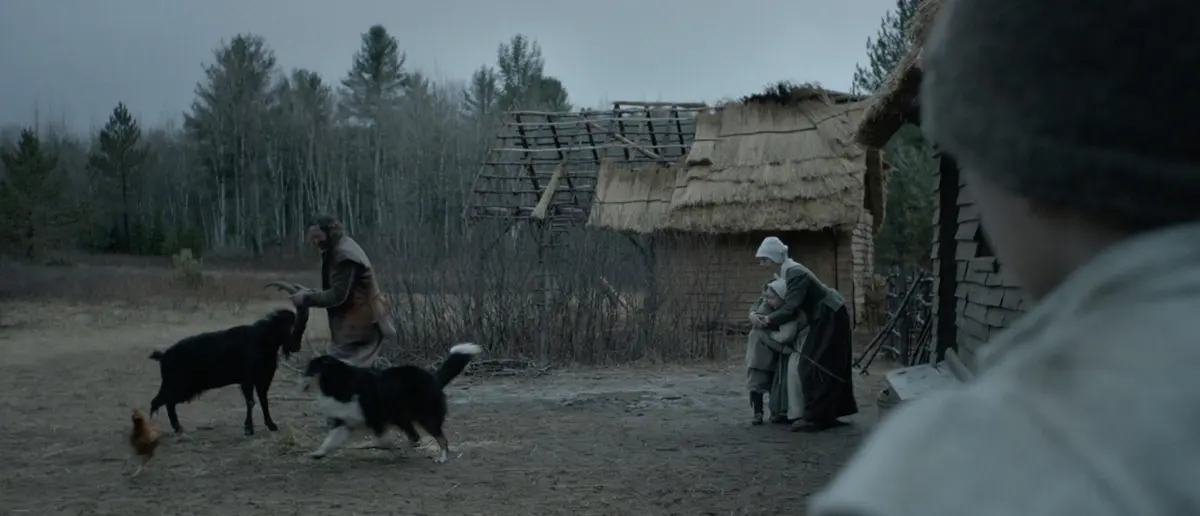
Sigh. Another poor Australian Shepherd prematurely put out to pasture. We really need to get our shit together, huh?
Robert Eggers’ The Witch shows Fowler, the dog of the Puritan settlers at the center of the film, disemboweled and exsanguinated by the sinister supernatural forces occupying the woods. It’s the same supernatural spirits that consume the family with hysteria, the same impossibly vicious entity that crushes a newborn baby to bloody dismembered bits.
So, Fowler’s death was, sadly, an inevitability. But thanks to Black Phillip, the four-hooved Satan incarnate that toys with the children’s innocence, Eggers provides a perfect foil to the purity that Fowler (and, let’s be real, all dogs) represents. A dog could never be that evil, that capricious, that cruel. And that’s why the goat made him a sacrificial lamb.
Our sweet boy Stanley from It Comes At Night sadly suffers a mysterious but ultimately savage demise. Stanley’s cinematic death did not happen in vain: at the very least, it forced us here at A24 into some much needed self-interrogation about our dog death problem. We tried some serious mental mathematics to make sense of Stanley’s slaughter and whether it was justified in terms of the film. We're having trouble showing our work for this equation.
Our protagonists Paul (Joel Edgerton) and Travis (Kelvin Harrison Jr.) find their four-legged family member gutted and bleeding out in the self-quarantined room that serves as a bulwark between their home and the unknown evil that lurks just beyond the red door outside. We are left to decide what exactly happened to the beautiful, dutiful white mixed-breed pup. Was it the body-horror-inducing plague that was wiping out some of the humans? Was it an infected person with a taste for flesh? Was it just a case of accidental friendly fire in the dark? That it’s left up to audience interpretation really adds insult to injury. Stanley stood by his family’s side even as tribalism divided their home and endangered their fellow man, only to suffer because of a depravity of their own design. We hear your complaints loud and clear: Stanley deserved better.
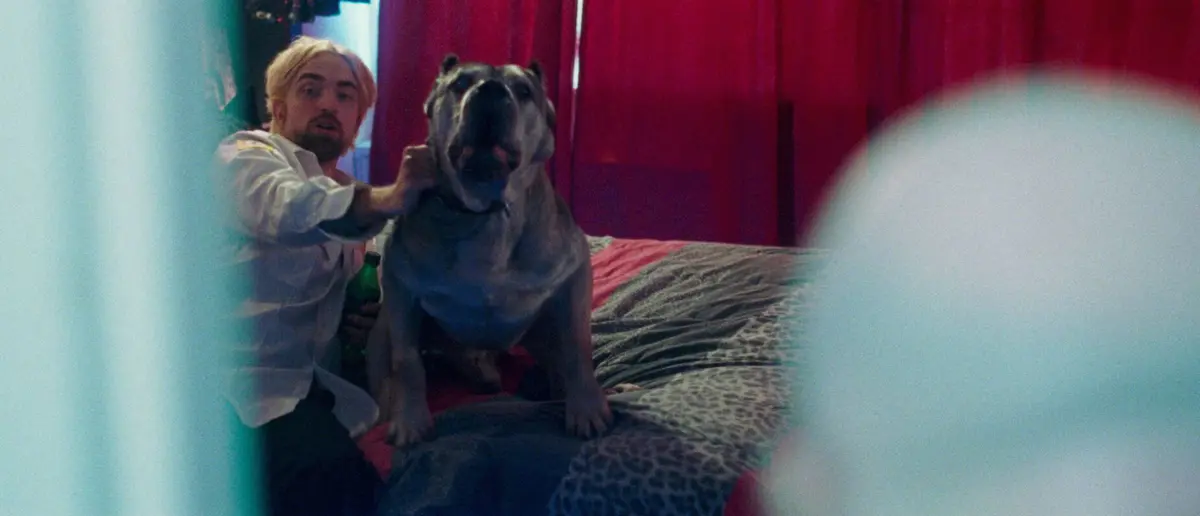
With their turbulently textured crime thriller Good Time, the Safdie Brothers plunge viewers into a putrid pocket of New York that is both instantly familiar and completely foreign. It’s anti-glam; a kaleidoscope of chaos full of crime, sweat, and hustle.
Our manipulative anti-hero Connie (Robert Pattinson) relates to animals on a metaphysical level, which gives him a leg up. He admits that he believes he was a dog in a past life and that he has mind control over animals. These words almost feel like a Chekov’s Dog type of situation—we are just waiting for some sort of showdown or confrontation with a canine. And given the violence and brutality and discomfort in which Connie involves everyone around him, the fate of any pup in his path is already dire.
When Connie finds himself locked in the apartment of the security guard (Barkhad Abdi) he’d just beaten, drugged and framed for a crime, he comes face to face with vicious pit bull. Connie’s affinity and spiritual connection to dogs pays off, as no harm comes his way, but once the pit is re-united with his enraged owner, we can quickly infer he's been subjected to violent abuse. To put it mildly, this angry pup is not getting to live his best life. The same could be said of the Cavalier King Charles Spaniel lapdogs owned by Connie’s lover Corey (Jennifer Jason Leigh). While they live in the comfort of a high-rise apartment on the ritzier side of New York, they’re in the care of an emotionally toxic misanthrope. So our hearts go out to them as well.
At least no dogs were explicitly harmed (or jerked-off, despite Pattinson’s late-night joke/gaffe heard around the world) within the Good Time universe!
Does this absolve us from our doggie-related sins?



